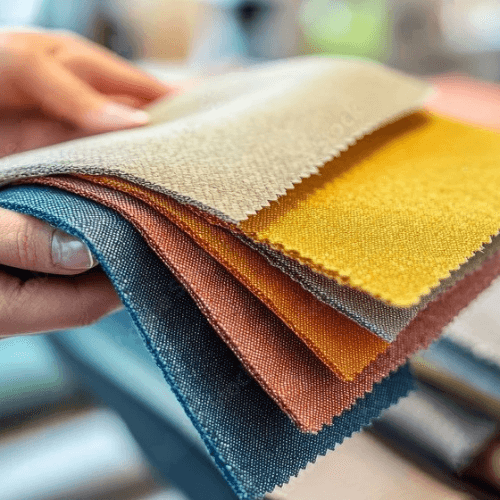The Rise of Sustainable Fabrics: How to Adapt Your Business Strategy

As the textile industry evolves, sustainability has emerged as a critical focus for businesses worldwide. With consumers becoming increasingly aware of environmental issues, the demand for sustainable fabrics is skyrocketing. In 2024, this trend is set to reshape the landscape of textile production and sales, presenting both challenges and opportunities for businesses. This blog explores the rise of sustainable fabrics and offers insights on how you can adapt your business strategy to thrive in this new era.
### Understanding Sustainable Fabrics
Sustainable fabrics are materials produced with minimal environmental impact, often made from organic or recycled sources. They include:
– **Organic Cotton:** Grown without synthetic pesticides or fertilizers, organic cotton is a popular choice among eco-conscious consumers.
– **Recycled Materials:** Fabrics like recycled polyester, derived from post-consumer plastic bottles, are gaining traction as brands seek to reduce waste.
– **Innovative Fibers:** New materials such as Tencel (made from wood pulp) and Piñatex (derived from pineapple leaves) are emerging as sustainable alternatives that offer unique qualities while minimizing environmental harm.
The shift towards these materials is not merely a trend; it represents a fundamental change in consumer behavior and expectations. According to recent studies, over 38% of consumers consider a brand’s social and environmental impact when making purchasing decisions, indicating a clear demand for sustainable options.
### The Business Case for Sustainability
Adopting sustainable practices is not just about meeting consumer demand; it also offers significant business advantages:
– **Cost Savings:** Implementing sustainable practices can lead to long-term cost savings through resource efficiency. For instance, using less water in production processes or utilizing renewable energy sources can reduce operational costs.
– **Brand Loyalty:** Companies that prioritize sustainability often enjoy stronger brand loyalty. Consumers are more likely to support brands that align with their values, leading to repeat purchases and positive word-of-mouth referrals.
– **Competitive Advantage:** As sustainability becomes a key differentiator in the market, businesses that adopt eco-friendly practices early can establish themselves as leaders in their field.
### Adapting Your Business Strategy
To capitalize on the rise of sustainable fabrics, businesses need to adapt their strategies across several key areas:
#### 1. **Sourcing Sustainable Materials**
The first step in adapting your business strategy is to evaluate your supply chain. Consider sourcing materials from suppliers who prioritize sustainability. Look for:
– **Eco-Friendly Certifications:** Ensure that your suppliers have certifications such as GOTS (Global Organic Textile Standard) or OEKO-TEX, which indicate compliance with environmental standards.
– **Recycled Materials:** Incorporate recycled fabrics into your product offerings. This not only reduces waste but also appeals to environmentally conscious consumers.
#### 2. **Investing in Technology**
Technology plays a crucial role in enhancing sustainability within the textile industry:
– **Waterless Dyeing Technologies:** Explore innovations that minimize water usage in dyeing processes. Technologies such as digital printing can significantly reduce water consumption compared to traditional methods.
– **Smart Textiles:** Consider integrating smart textiles into your product line. These innovative fabrics can offer additional functionality while appealing to tech-savvy consumers.
#### 3. **Enhancing Transparency**
Consumers today demand transparency regarding the origins of their products:
– **Traceability Solutions:** Implement traceability solutions like blockchain technology to provide customers with information about where and how their fabrics are sourced and produced.
– **Clear Communication:** Clearly communicate your sustainability efforts through marketing materials, labeling, and social media. Transparency builds trust and enhances brand reputation.
#### 4. **Embracing Circular Economy Principles**
The concept of a circular economy focuses on minimizing waste and maximizing resource use:
– **Upcycling Initiatives:** Consider launching upcycling programs where customers can return old garments for recycling or repurposing into new products.
– **Design for Longevity:** Create products designed for durability and longevity rather than fast fashion. This approach not only reduces waste but also appeals to consumers seeking quality over quantity.
#### 5. **Engaging Stakeholders**
Collaboration with stakeholders is essential for driving sustainable practices:
– **Partnerships with NGOs:** Collaborate with non-governmental organizations focused on sustainability to enhance your credibility and gain insights into best practices.
– **Industry Collaborations:** Join industry initiatives aimed at promoting sustainability within the textile sector, such as the Sustainable Apparel Coalition or Better Cotton Initiative.
### Future Trends in Sustainable Fabrics
As we look ahead, several trends are likely to shape the future of sustainable fabrics:
– **Increased Consumer Demand for Transparency:** Consumers will continue to seek out brands that provide clear information about their sustainability practices and sourcing methods.
– **Advancements in Recycling Technologies:** Improved recycling technologies will enable greater recovery of textiles, further supporting circular economy initiatives.
– **Regulatory Pressures:** Governments worldwide are implementing stricter regulations regarding environmental impact, pushing companies towards more sustainable practices.
### Conclusion
The rise of sustainable fabrics represents a significant shift in the textile industry that businesses cannot afford to ignore. By adapting your strategy to embrace sustainability—through responsible sourcing, technological innovation, transparency, circular economy principles, and stakeholder engagement—you can position your business for success in 2024 and beyond.
As consumer preferences evolve towards eco-friendly options, those who lead the charge toward sustainability will not only contribute positively to the planet but also secure their place in an increasingly competitive market. Embrace this opportunity to innovate and transform your business into a leader in sustainable textiles today!






